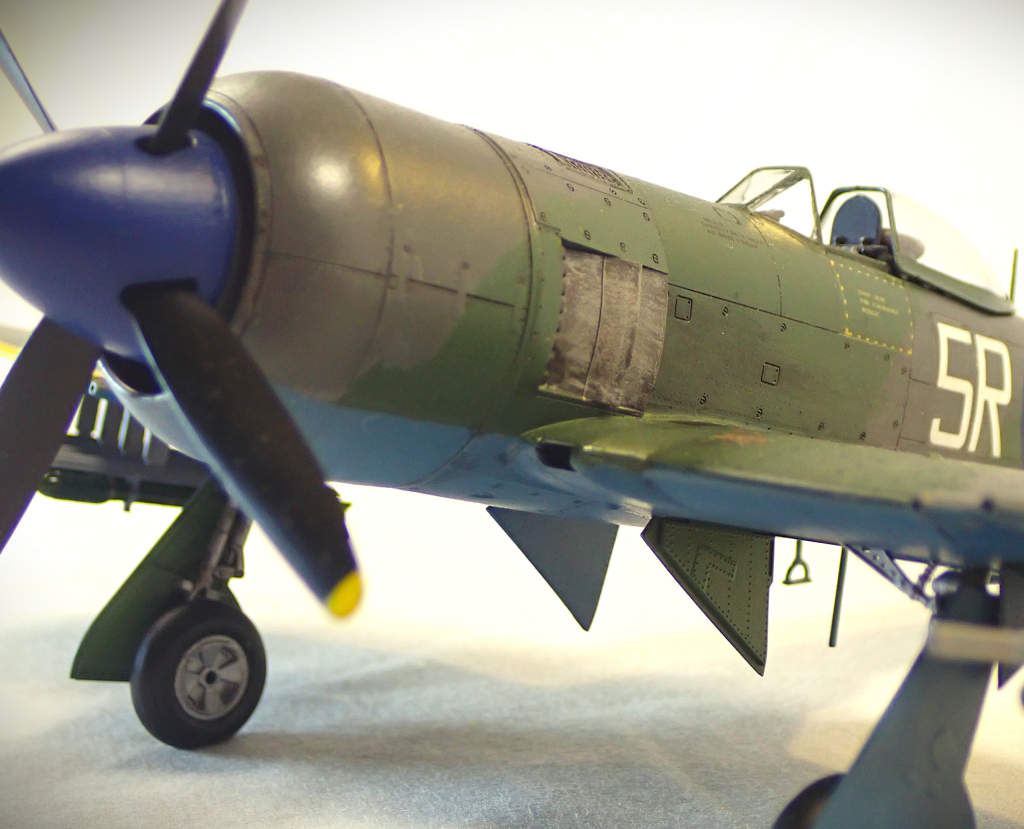The Hawker Tempest II was a direct descendant of the Hawker Tempest Mk.V. However, the Tempest II, due to various delays and developments, did not reach operational capacity until just before the end of WW2.
The Hawker Tempest II is a single-seat single engine low wing cantilever monoplane fighter developed at the same time as the Tempest V. So, why the leap in numbering? Simple. The Tempest II was designed from the outset with a Bristol Centaurus 18-cylinder radial engine giving the aircraft a short closely cowled nose, similar to the German FW190. There were two prototypes built in in1943. The first powered by a Bristol Centaurus IV engine giving 2520hp driving a four-blade propeller, closely cowled and slim lined, with carburettor intakes in the root of the wings. The second flew in September 1943, same but with an enlarged tail unit. Trials were very well accepted, and orders were placed for 500 Tempest II’s to be built by Gloster.
However, the Typhoon was still being produced in large numbers so Tempest II’s were allocated to Bristol and Hawker. This delayed proceedings further. In late 1944 the first Tempest II’s were delivered for testing. These seven aircraft were very successful and proved their worthiness, but it was all too late. With the end of hostilities in sight the order for 1800 Tempest II’s was cancelled. Only 402 were built by Hawker but too late for WW2. With the 50 built by Bristol, 452 entered service in late 1945. 180 were sent to India to serve with the four squadrons based there as well as the Indian Air Force. Once India and Pakistan gained independence in 1947 the squadrons were returned to England and disbanded. The Tempest II’s remained and were split between the two countries. Both India and Pakistan ordered more Tempest II’s from UK surplus later.
The Tempest II was used after the war in Europe as a front-line defence role by three BAFO(British Air Force of Occupation) squadrons in occupied Germany and with two home squadrons. Four of the squadrons would be re-equipped with Vampires by 1949. However, 33 Squadron continued with Tempest II’s serving in combat during the Malayan Emergency in 1950-1951 as fighter and ground attack. By the end of 1951 the Tempest II was retired.
There are few surviving aircraft with one airworthy in the UK.
Tempest Mk.II MW763 served with the RAF in 1945 and is now under the supervision of Sywell Aerodrome in Northampton.
Another five are under restoration in private collections with another four on display: one in India, one in Wales and the other two in the superb RAF Museums at Hendon and Cosford.
